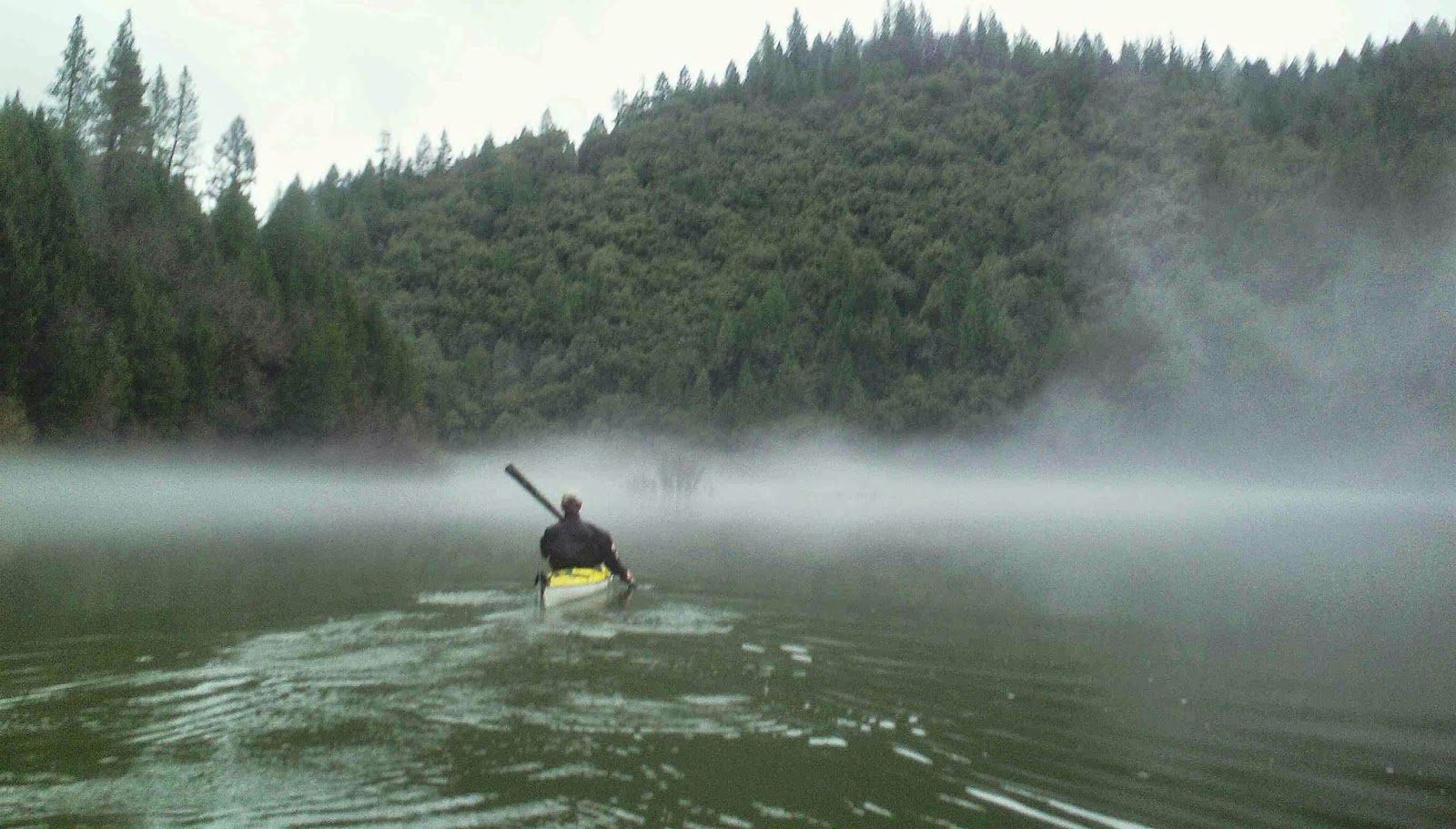 “Going up that river was like traveling back to the beginning of the world, when the plants ran wild and the trees were kings. We sailed up an empty river into a great and silent forest" --Joesph Conrad, Heart of Darkness...
“Going up that river was like traveling back to the beginning of the world, when the plants ran wild and the trees were kings. We sailed up an empty river into a great and silent forest" --Joesph Conrad, Heart of Darkness...In the past couple of weeks, I have been taking trips up the river and then back down. It is challenging in a way for me. All explorers went up the river from Lewis & Clark to Teddy Roosevelt. It's the drive to see what is around the next bend and the anticipation of not knowing what will be seen.
My kayak partner Erik Allen and I were for that challenge last month when we paddled up the North Fork of the American River from Upper Lake Clementine. We had traveled up another section of the river before at a place called Rattlesnake Bar and above Folsom Lake. There is a mixture of lake and river. Above Lake Clementine, it would be all river. Going up the North Fork follows an ever-rising gradient. The water comes in swift fashion. We would paddle pool to pool portaging through the rapids. Erik's longer sea kayak would help him muscle through the fast current a few times by vigorously paddling as hard as he could to pass over the ledge where the water was in a boil. Its nature's rowing machine.
"This is a marathon, not a sprint," Luke Kimmes told the Des Moines Register "Physically, it's very demanding to paddle nine to 12 hours a day, but a lot of it is up here (he points to his head). It's that mind over matter idea."
Kimmes and five others are on different odyssey this year. They are on the Adventure to Rediscover North America Expedition, canoeing from the Gulf of Mexico to the Arctic Ocean. The journey will take them through ten states, and five Canadian provinces traveling the most way the upstream on the Mississippi and Minnesota Rivers. It's well past 2,000 miles upstream before they are finally going downstream in the Red River Valley of the North and into Canada.
"This is the type of trip I dreamt about when I was a kid," said Kimmes, "It's a passion of mine to show others that getting outside and enjoying the environment is good for the soul. It's a lot better than sitting at a desk."
I compare it to climbing steps. On some rivers, you will feel a gentle tug or push. When a river turns, it forms a bend. The strongest and deepest current will usually be found on the outside of that curve. So while Erik tries to power paddle through, I take the easy way, finding where the rapids are the narrowest to the pools. Locking my boat against the eddies, a relative calm where the main current flows reverse, I climb out of my kayak and push it through the fast water. Leaning into the streaming and bracing against the boat.
I have waded before. In the Midwest, we could never really wade in many rivers. Their bottoms were made of mud and silt. You would quickly sink up to your ankles or knees in muck. Don't even think of wearing a pair of shoes. You would either leave them stuck in the mud or spend the next hours trying to scrape the sludge off them. There it's better to go barefoot with the mud oozing between your toes.
Water shoes are a must today. A couple of weeks ago this water was snow. It is still cold against my legs and feet. This water has enough power to knock me down and the rocks underneath are slippery and jagged. My neoprene boots hold in my warmth and also protect my feet in the rocky river bottom. In my mind, I think about to the explorers and gold miners who stood ankle deep in this cold stream searching for new lands and new treasure. Before long we are back flat water with a roar of the rapids behind us.
"Really, it speaks to what this trip means to me, which is if you have a passion, part of passion is struggling and sacrificing for what you want." said the mastermind Adventure to Rediscover North America Expedition, Winchell Delano in the same interview with Des Moines Register, "The feeling when you cross that divide and you're going downstream again, it's like delayed gratification through cathartic pain."
In the Midwest the slope is measured in inches. It's like pouring water on a pool table and watching it meander to the table's lean. In the foothills of California, if there is water, it comes cascading down the canyons offering scenic beauty and solitude. At one spot we are treated with the sight of a bald eagle. It pays us no mind as we paddle on in a quiet pool. When soaring, it could be on to the next canyon in the time it takes us to paddle around one bend. It's all new to us, even though it has been mapped, surveyed and Google earthed. When we are out here paddling up stream little matters. It's like we are the first to see it, hear it and touch it.
"Just one more bend," we say to each other. Or maybe even one further up. Lets see how far we can go, powered by trail mix and granola bar before turning back. Then we can turn around and ride the bouncy gentle rapids back to still waters.



















